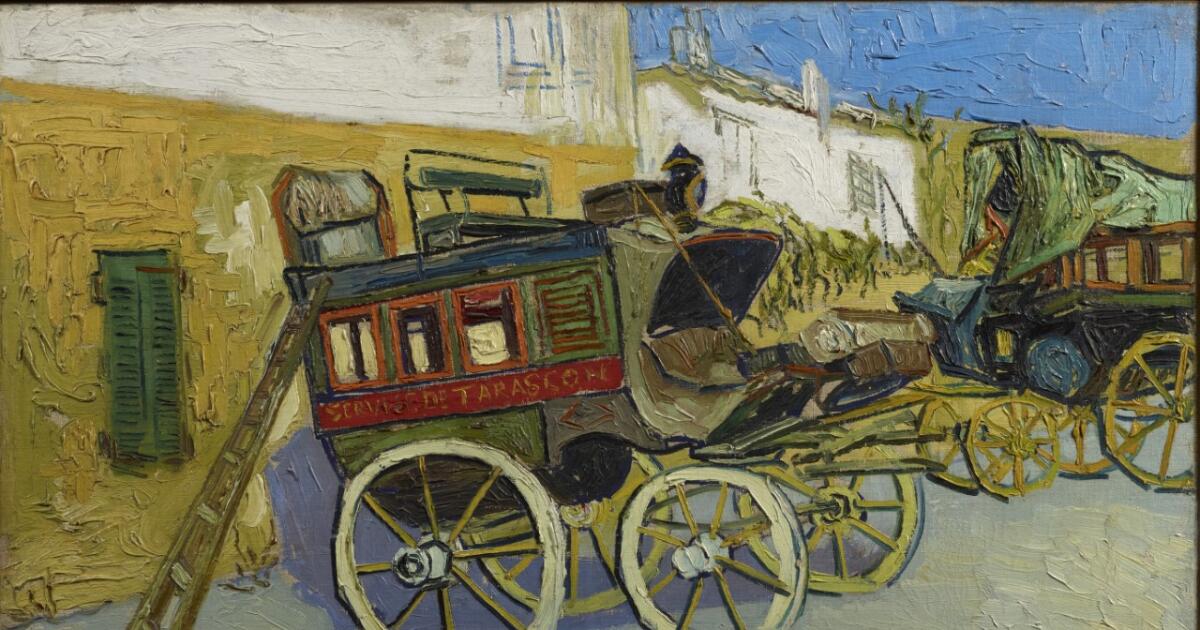Los Angeles County Museum of Art is being gifted its first paintings by Vincent van Gogh and Édouard Manet, in addition to four works by Henri de Toulouse-Lautrec, Alfred Sisley, Wilhelm Lehmbruck and Maurice Brazil Prendergast.
The artwork comes from the Pearlman Foundation, which is dividing up its collection of Impressionist, Post-Impressionist and Modernist art — one of the most important private collections on record — between LACMA, New York’s Museum of Modern Art and the Brooklyn Museum.
While each museum will have ownership of a portion of the collection, the institutions will share the artwork whenever their pieces are not on view, said LACMA director and chief executive Michael Govan.
“We inherited a responsibility, not a collection,” said Daniel Edelman, president of the foundation and grandson of Henry and Rose Pearlman, who amassed the works beginning in the mid-1940s. “This doesn’t belong to us, it belongs to the public — we’re caretakers of it.”
After taking the lead at the foundation more than a decade ago, Edelman, with this public-spirited mission in mind, began traveling the world to meet with as many museum directors as possible in order to better understand what might be possible in terms of gifting the collection.
Since the mid-1970s, the Pearlman Collection has been on loan to the Princeton University Art Museum. In the past years, as the value of the art rose exponentially, so did the insurance and transportation costs, Edelman said. This made loaning the work out to a variety of institutions increasingly difficult.
Govan’s commitment to fostering satellite locations around Los Angeles, including in South L.A., was one of the reasons LACMA ended up with a gift, Edelman said.
“We think fundamentally, these three museums not only have the resources, but also have the innovative creativity to solve those problems and to continue getting these works out to new audiences and more diverse audiences,” said Edelman, adding that LACMA, Brooklyn Museum and MoMA, “have worked to engage young people, people without artistic backgrounds and people who come to the art in the same way that that Henry and Rose did, which is without the art history education, but just from a love for the work.”
Henry Pearlman was born in Brooklyn in 1895 and made his fortune in cold storage and refrigeration. He was an avid art collector who began acquiring Modernist works of art with the purchase of a Soutine landscape. Neither he nor his wife had a college education, and their love of art was visceral, Edelman said.
Henry “started collecting through this kind of self-taught journey,” Edelman continued. “Falling in love first with the image or being provoked by it, and then learning what the context was and who the artists were.”
Edelman grew up seeing these masterworks hanging in his grandfather’s office. From the very beginning, he said, Henry sought to share his collection and even approached MoMA very early on about the idea. This is part of why the foundation is so committed to this public gift — and to the sharing structure it set up between the institutions.
“I don’t want to call it unique, but it’s just different enough that I hope people look at that and make sure works don’t go into storage, that instead, they stay on exhibition in front of new audiences and alongside different other works,” said Edelman. “These works need to stay alive in that way.”
From February to July 2026, an exhibition titled “Village Square: Gifts of Modern Art from the Pearlman Collection to the Brooklyn Museum, LACMA, and MoMA” will be on view at LACMA. The show will feature the entirety of the collection before it is dispersed to its various new homes, including dozens of pieces by Paul Cézanne and work by Van Gogh, Manet, Toulouse-Lautrec, Amedeo Modigliani, Paul Gauguin, Chaïm Soutine and other Modernist masters.
After that, the Brooklyn Museum will receive 29 works from the Pearlman Collection, with a focus on art that helps tell the story of Pearlman’s time in that borough and his commitment to bringing art to diverse communities. MoMA — known for its world-class department of drawings and prints — will be gifted 28 works, with a focus on Cézanne.
In L.A., art lovers will be thrilled at the arrival of the Van Gogh.
The year 1888, when Van Gogh moved to Arles in the South of France, is considered by art historians to be the high point of his life and career. A painting from that year titled “Tarascon Stagecoach,” which Van Gogh created in anticipation of Gauguin’s arrival at the Yellow House, will join LACMA’s collection, as will Manet’s “Young Woman in a Round Hat,” which dates to the late 1870s.
“They have been available to the public in touring exhibitions. But to have them so immediately accessible at LACMA is thrilling,” said Govan. “We have a beautiful Van Gogh drawing, but we don’t have a painting, and we don’t have a painting by Manet. And those two works in particular just add so much to the visitor experience.”
Govan notes that Van Gogh wanted his paintings to be displayed in cafes to make them accessible to the public. That spirit mirrors the foundation’s impetus for splitting the Pearlman Collection between three distinct institutions, and Govan said he is excited to eventually put the Van Gogh on display in South L.A.
Plans for a museum in South L.A. have come and gone, but LACMA says it remains committed to eventually opening one and is in talks with the county about an outpost at Earvin “Magic” Johnson Park.

